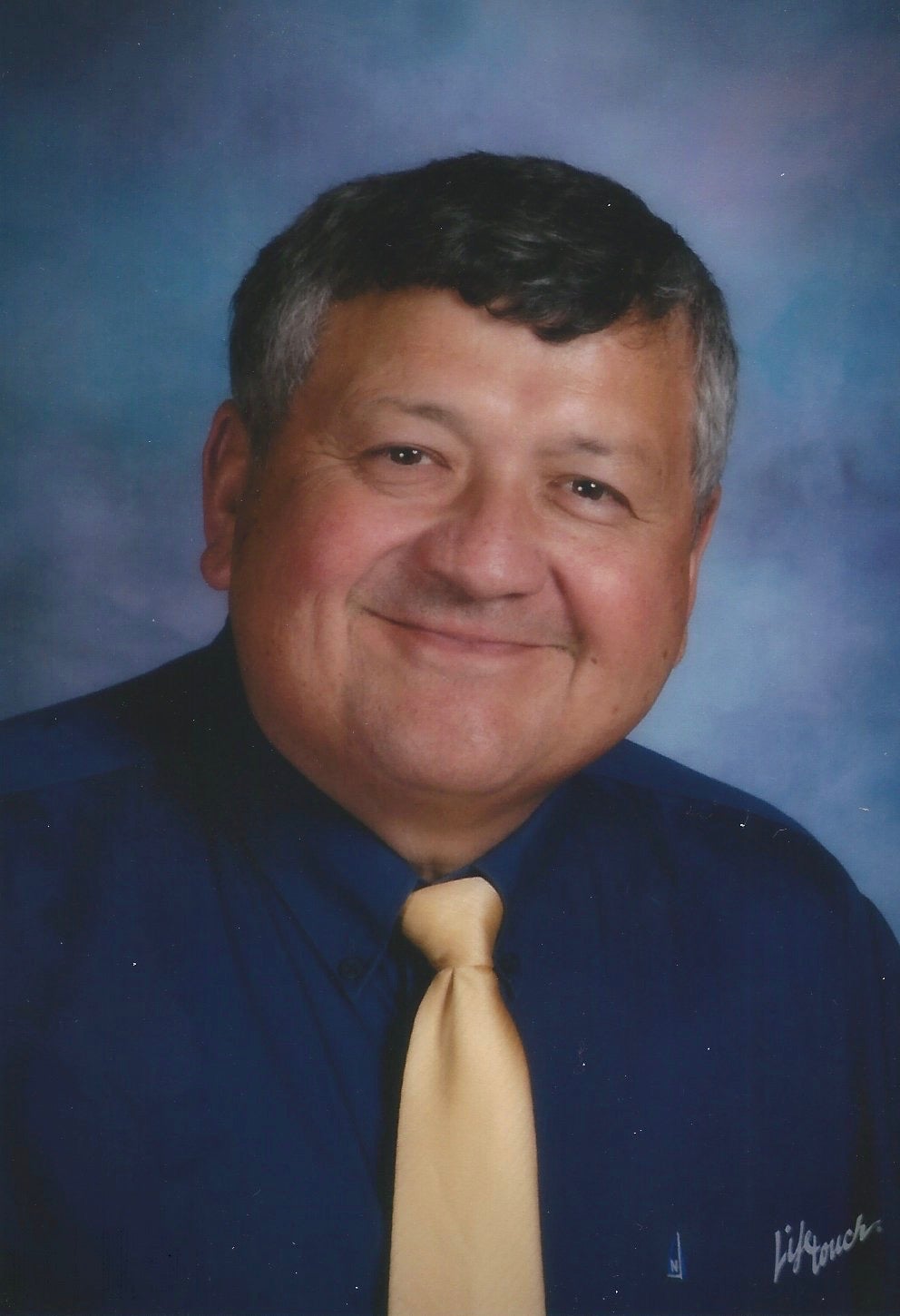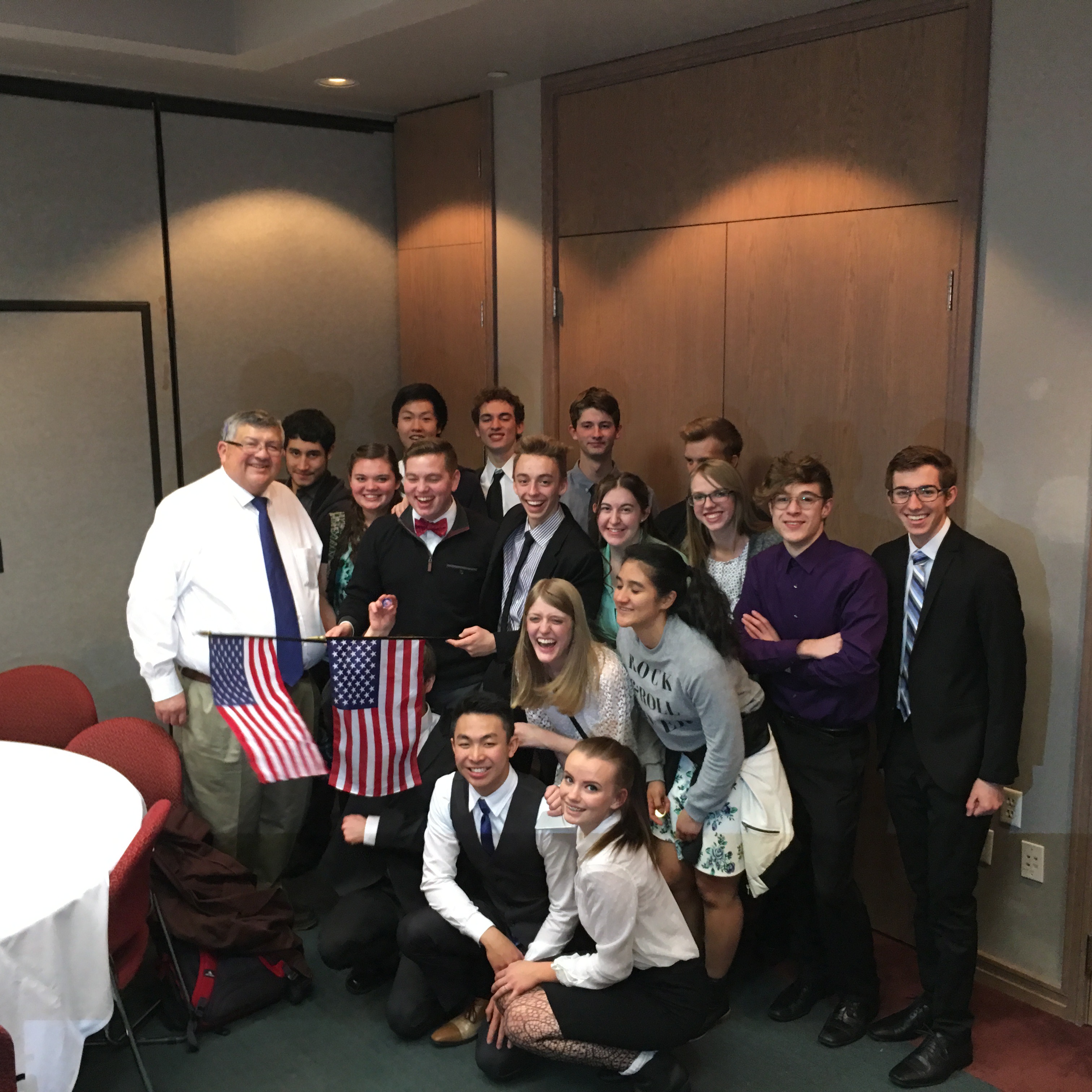Get to Know the 2017 History Teachers of the Year: Richard Ochoa, Utah
Posted by Gilder Lehrman Institute Staff on Tuesday, 01/30/2018
In 2017, the Gilder Lehrman Institute recognized 52 State History Teachers of the Year for their tireless and innovative efforts to make history come alive for their students.
But who are they, really? We asked these talented teachers to answer a few questions about themselves and to reflect on the challenges and joys of teaching. We will feature a state winner every Tuesday and Thursday, so keep checking back to learn more about these outstanding educators!
This week, meet Richard Ochoa:
 Richard Ochoa, Alta High School
Richard Ochoa, Alta High School
2017 Utah History Teacher of the Year
Do you have a favorite/funny memory from teaching?
The favorite and most influential moment for me was in my first year of teaching. I was teaching an elective speech class. There was a student who was troublesome and had a difficult time mixing with my other students. He resorted to profanity in almost every conversation and discussion. He was a disruption to the entire class environment. I felt he had to go. My first Parent Teacher Conferences came up and I was going to suggest to his parents that they might consider transferring him out of my class. His father arrived and I was ready to begin my presentation when he said “Mr. Ochoa, before we sit down, I just wanted to shake your hand and tell you that the only reason my son comes to school is because of your class.”
At that point I was speechless and changed at the same time. I then realized that I would never know who I reached in class. That every student wants attention and reacts to your reaction to them. It has been a guiding force in every class I have taught since then. I have continually strived to acknowledge each student. I try to discover what activities they are involved in at the school. I compliment their success and let them know I believe in them as a person as well as a student. That event was thirty-nine years ago and it affects me to this day.
State one fun historical fact about the town you live in or grew up in.
The most memorable historic moment in my city was the Robert Kennedy motorcade that went by my high school in East Los Angeles. I missed touching him during the parade. The California primary and my graduation took place the next day. The night of the celebration of his primary victory at the Ambassador Hotel was the end, to me, of the “Last Campaign.” To me the hopes and dreams of America left that night and we have never been the same since. It is a story I tell my students every year.
What is the last great history book you read?
The last great history book I read was American Revolutions: A Continental History, 1750-1804 by Alan Taylor. Professor Taylor’s books have been a tremendous resource for my classroom. William Cooper’s Town and American Colonies have provided background for the early development of the United States. His latest book gives me access to different views on the impact of the American Revolution. The ideals of the Revolution are exceptional. Yet those ideals were designed for a select few. The book speaks of inclusion and exclusion, which is important for the students of today to understand.
What is your favorite historical site or museum?
My favorite historical museum would be the National Portrait Gallery in Washington, DC. It is the one museum in the Washington where you can truly reflect on the history behind the image. This museum is not on the list for many tour groups, so it gives you time to enjoy the displays with little interruption. It is here that I see the images that I usually find only in textbooks. I am able to closely observe portraits and images that have been accumulated for us in a single collection. It is here that I can see the portraits of the leaders of every time period of American history. You see the portraits of the significant figures of every major war, every social, cultural, political, and religious movement that forms our national identity. The rotating displays provide a new view of a moment in our time. My last visit, there was a display of the impact Babe Ruth had upon the United States. His influence extended beyond the regular sports fan. The many monuments and museums in Washington are essential for us to observe and understand. However, it is the National Portrait Gallery that allows you to truly take in the importance and understanding.
 What advice would you give to young people, in high school or college, who may be considering a career in education but are unsure?
What advice would you give to young people, in high school or college, who may be considering a career in education but are unsure?
The advice I would give to anyone considering a career in education is fairly simple. Remember why you enjoy the subject you want to teach. Too many times teachers feel they have an obligation to make sure that they cover each and every item that is in the textbook. That is not why I enjoy teaching history. Let the textbook do the heavy lifting. Let students hear the stories that made you love your subject. I enjoyed the stories that I heard about individual moments in time. I loved history through hearing the personal reflections of my family about immigrating to the United States, serving in World War II, surviving the Great Depression, living in the Fifties, Sixties, and beyond. My students enjoy those stories. Your students will enjoy yours.
It is also important that you be yourself. You can never teach the same way another teacher does in his or her classroom. Every teacher has their own style. I presented a lesson demonstration at a conference and had a teacher ask if that is really the way I presented that lesson to my students. He said he did not know if he could do it that way. I asked him, “Why would you?” Do not try to be someone else, be yourself. It will make you real. Students know when a lesson is strained and copied. You simply become a version of a textbook. Be someone beyond the printed page. Be yourself.
If you could travel back in time and meet any historical figure, who would it be and why?
If I could travel back in time the historical figure I would like to meet is President Franklin Delano Roosevelt. FDR was a hero to my parents and grandparents. I asked them why, and they talked about the hope he brought to their generation. Was it real? Remember, I grew up in East Los Angeles. I did not see that opportunity in my neighborhood. I would want to ask how far he wanted his dream to go. What did he want for everyone in the nation? How could he make sure the people believed in two great crusades? For the most part, Americans believed in the dream of possibilities. For my parents, he was really the only president they knew until high school, and they were true believers.
I look at the multiple programs of the New Deal and it is hard to picture the United States without them. I would want to witness a live broadcast of one of the Fireside Chats that reassured Americans, while also explaining their obligation to solve the problems we all faced. I would ask him about the decisions that led to winning World War II. The Japanese-American Relocation is difficult to understand today. I interviewed people living in California before Pearl Harbor and was intrigued by their response. They saw danger in their neighbors and favored the Relocation. I would want to understand that decision and yet applaud his tenacity in winning the war. I have to admit it is not just my older relatives who find him fascinating. FDR provided an idea that “Happy Days Are Here Again.” People believed they could make life better for themselves and their children. That dream has passed on to my children. My son Mike rescued a beagle. He decided to name him Franklin Delano Dog. The members of my family still believe in FDR, and I would love to see how that belief developed.
Who is your favorite historian?
My favorite historian is John P. Kaminski of the Center for the Study of the American Constitution at the University of Wisconsin. Professor Kaminski is without a doubt the greatest storyteller on the Constitutional Era. He dives into the time period. To him anything past 1800 is current events. He became the editor of the Ratification Project upon the death of Professor Merrill Jensen. I have seen him deliver stories on his Founders on the Founders series. He inspires those who listen. I had him present at our high school, and there was a student from another teacher’s class who was underperforming in multiple classes. His mother spoke to that teacher at Parent Teacher Conferences and she mentioned that her son came home that day and stated that he had seen this great professor speaking about Lafayette and raved about how great it was to hear his story. That is the impact John P. Kaminski has on those fortunate to be able to hear him. Our English Department has adopted his series as the biographical readers for our AP Junior English classes. John Kaminski makes history come alive for students in his stories and his writings.
What is your favorite historical film or series?
I will date myself, but it was important to the development of my love for history. In the 1960s, there was a television series called Profiles in Courage. My mother, a devout Republican, loved JFK and insisted that we watch this series. I became excited when I heard the theme song and knew that I would see the story of an American who stood for principle above the norm. This was incredible for the time period. This was the era of Civil Rights, and this show featured political courage, Edmund Ross, African American contributions, Frederick Douglass, women’s roles in American history, Anne Hutchinson, and others. All this being presented in 1964. The acting may be dated, and the series is in black and white, but the message from those shows is something we need today.
Do you have a favorite historical topic or era?
I enjoy discussing the changes of the Fifties and the Sixties. I also enjoy being able to give personal stories. I show students my polio vaccination card. I have copies of Dick and Jane readers. I have the Life magazine comparing how the American and Soviet students conducted their daily activities. I tell students about how my parents told my sister and me how to survive the threat of a Soviet attack during the Cuban Missile Crisis. I lived through those decades as a student and can relate it to my students. It is fun for me, and for my students as well.
My students enjoy the Constitutional period and the development of the new nation. I give my students a copy of American Legacy, a collection of key documents to study. Many never studied the reasons for the shape of our government. By reading the Constitution, the Federalist Papers, and anti-Federalist writings the students gain an appreciation for how difficult a journey it was to formulate our Constitution and our government framework.